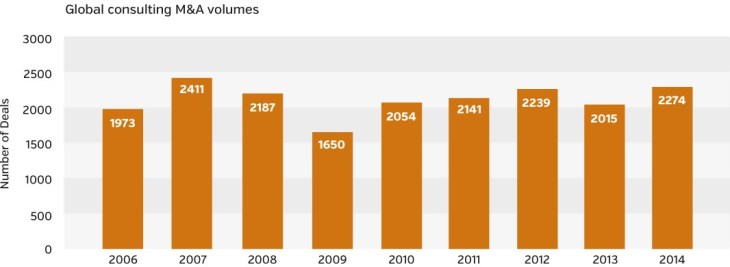Is it time for you to de-risk and take some ‘chips off the table’?
Taking chips off the table is a term used for when a business owner sells a proportion of her or his equity as an intermediate step towards a future 100% sale. This enables you to bank some money now, remove pressure to sell the whole company at the first opportunity, but remain with the firm and grow it even bigger, then sell your remaining shares for a more lucrative sum down the line. This article explores why you may want to consider this option, when to time it and how it could be achieved.
What typically drives owners to consider this option?
You’ve worked hard for years to build your consulting firm and seen one or two tough times in your journey so far, driven by the ups and downs of business cycles, or boom and bust economic cycles. You may even have had to put your home on the line and self-funded the business when money in the bank ran out and working capital was required. Now you’ve got the company into a great place and could probably sell it and move on. But you remain highly motivated and want to see it through to the next level, you don’t yet want to exit and retire. But neither do you want to risk another painful cycle and see your equity value fall again. This is when the option of a partial sale of shares may be right for you. You’ve earned the right to have your cake and eat it too!
Is now the right time?
Alongside your personal objectives, motivations and what you want financially, there are two major considerations on timing:
- Business cycle
- Market cycle
Business cycle – Where your company is in its lifecycle and maturity is a key driver. The optimum time in the lifecycle is when the business has proven itself by growing over the last 3 years, is at a peak and your pipeline and forecast shows continued growth. Maturity means that the business has achieved robustness, both in scale and financial stability, because small scale firms generally come with much higher risks for investors.
Market cycle – This is about supply and demand. Is it a buyers’ or sellers’ market? If your business cycle coincides with a peak in the market then a premium valuation of your equity is possible. At the time of writing this article in mid-2015, we’re in a sellers’ market where investors have war chests they need to use, but quality consulting firms in the growth niches of consulting are in short supply. As you can see from the chart below, now is a very good time to sell a consulting firm. In 2014 deal volumes were 32% above the previous low in 2009 and the market rose to only 7% below the market peak in 2007. Valuations are also at a 5 year high.
Options for a partial sale of equity
In the consulting sector, partial trade sales are not common, so for a consulting firm there are three main options:
- Sell to a large financial investor
- Sell to a small financial investor
- Sell to employees
Sell to a large financial investor – Private equity (PE) is the predominant type of investor for consulting firms with scale. In the USA there are over 100 PEs who invest in our sector and about 25 in the UK. They are very flexible and will normally buy between 20% and 75% of your shares and these days will not always require a controlling stake. In addition to part ownership, PEs will also invest growth money in return for equity dilution across all shareholders.
In order to be attractive to PEs your firm would typically need to pass two main hurdles:
- Some may consider firms with $1m EBITDA, but most need $3m and above
- A growth plan they believe in, that enables them to triple their investment in 3 to 5 years
Sell to a small financial investor – This is the angel investor community and as a rule of thumb where you would go if your firm is sub $5m in revenue. Angels will typically invest up to around $1m plus or minus, and more often than not will want some involvement in the firm.
Sell to employees – There are numerous schemes and options for you to sell equity inside the firm, but large amounts of cash up front are less likely and in most cases in order to make it work you would need to offer your shares at a discount.
Conclusion
The decision of when and how to take ‘chips off the table’ needs to be made only after careful consideration of all of the options and possible outcomes. The current market is in a good place for sellers right now, so if you are thinking about this subject, then we’d be pleased to help inform your thinking and decisions, so please do let us know if you want an informal chat.


